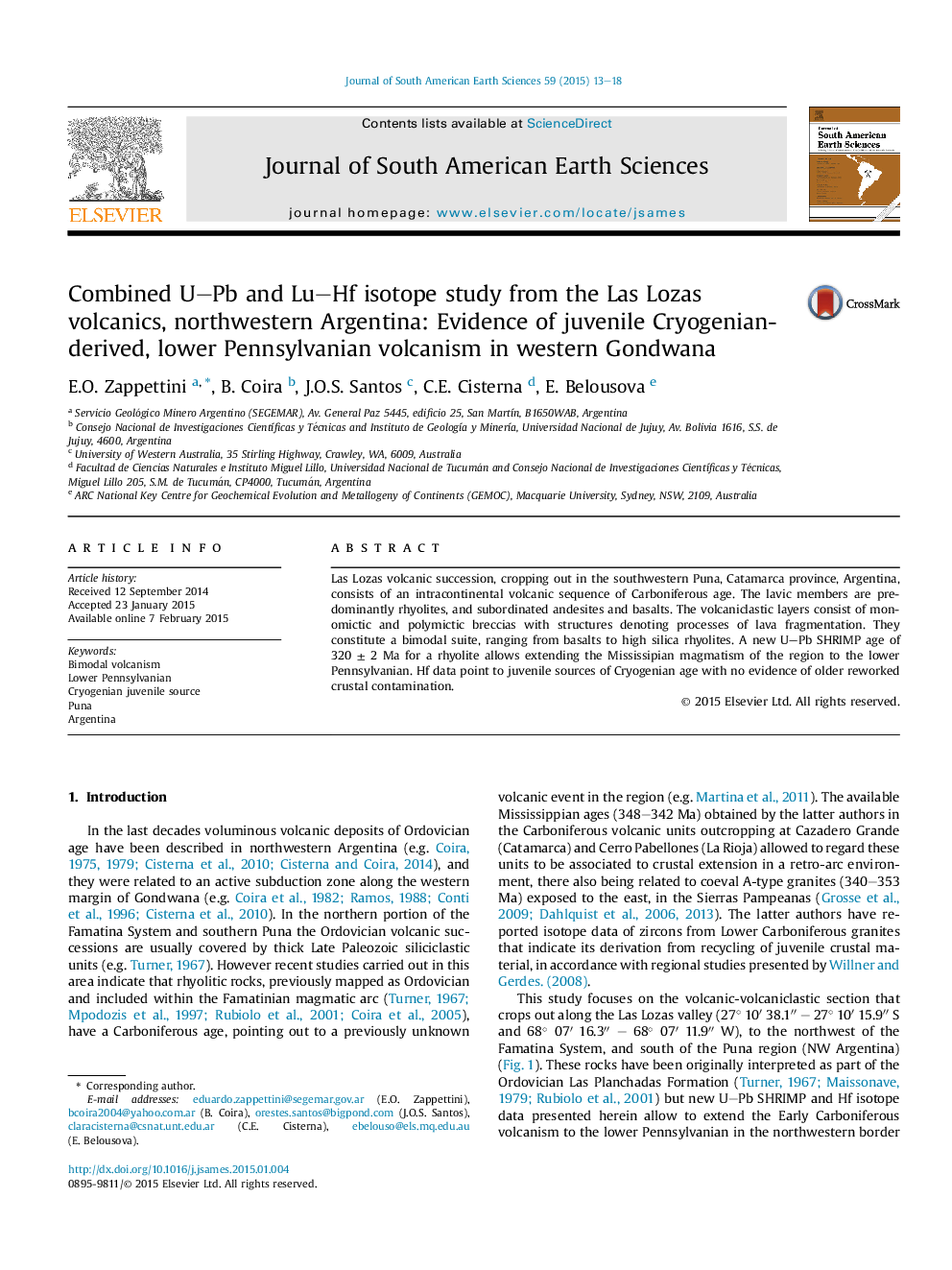| Article ID | Journal | Published Year | Pages | File Type |
|---|---|---|---|---|
| 4682231 | Journal of South American Earth Sciences | 2015 | 6 Pages |
•A bimodal suite (basalts to high silica rhyolites) was mapped in NW Argentina.•The 320 ± 2 Ma age allows extending the Mississipian magmatism to the lower Pennsylvanian.•Hf data point to juvenile sources of Cryogenian age without crustal contamination.
Las Lozas volcanic succession, cropping out in the southwestern Puna, Catamarca province, Argentina, consists of an intracontinental volcanic sequence of Carboniferous age. The lavic members are predominantly rhyolites, and subordinated andesites and basalts. The volcaniclastic layers consist of monomictic and polymictic breccias with structures denoting processes of lava fragmentation. They constitute a bimodal suite, ranging from basalts to high silica rhyolites. A new U–Pb SHRIMP age of 320 ± 2 Ma for a rhyolite allows extending the Mississipian magmatism of the region to the lower Pennsylvanian. Hf data point to juvenile sources of Cryogenian age with no evidence of older reworked crustal contamination.
Graphical abstractFigure optionsDownload full-size imageDownload as PowerPoint slide
